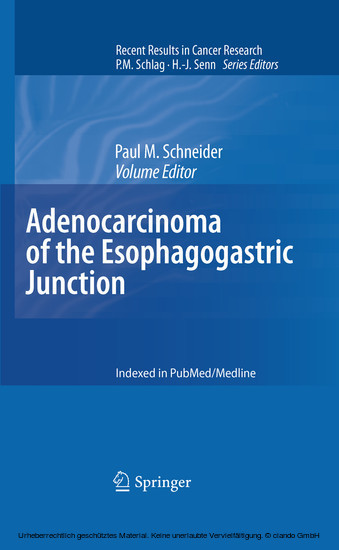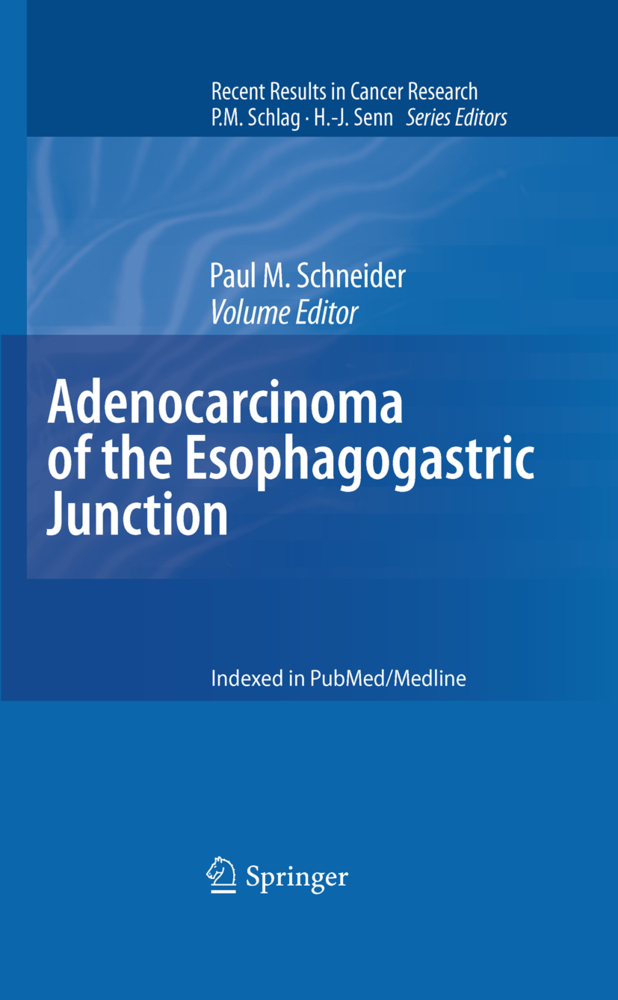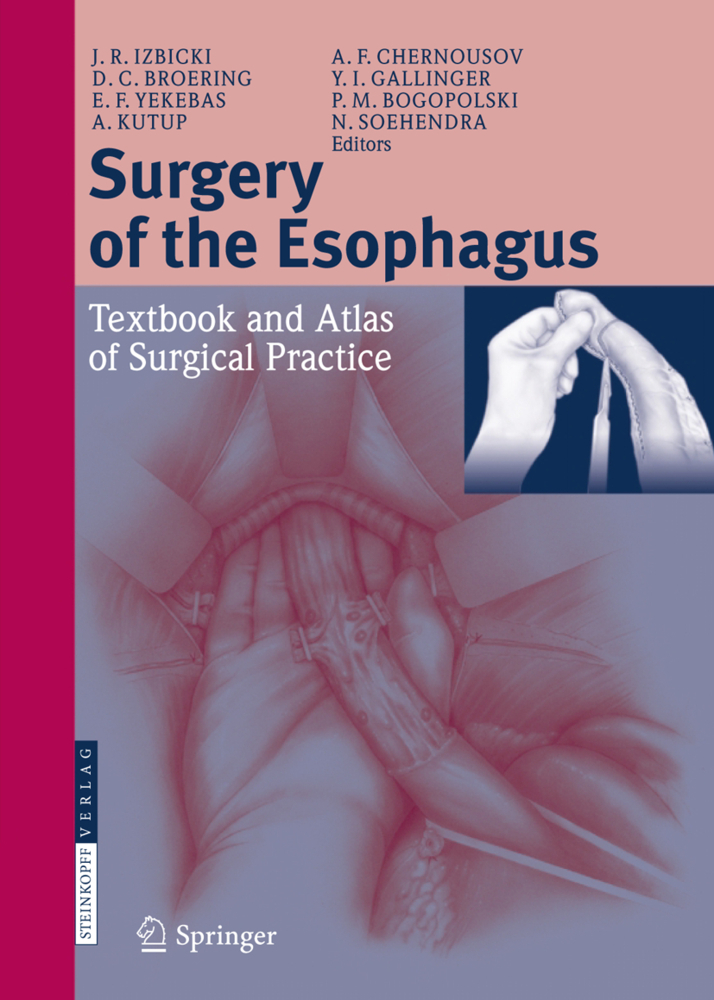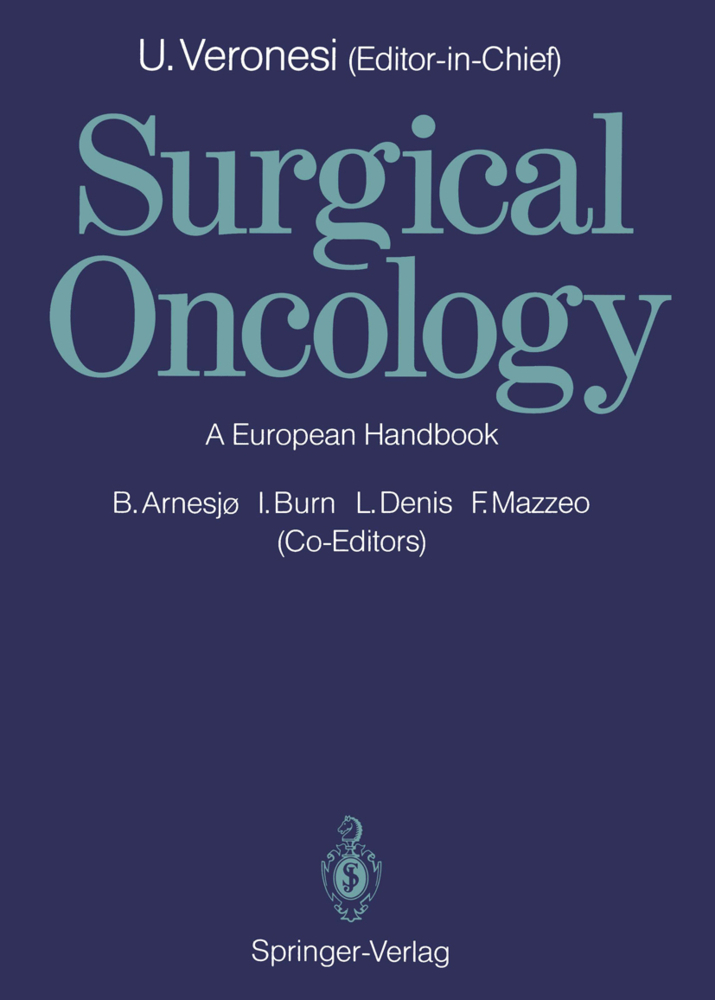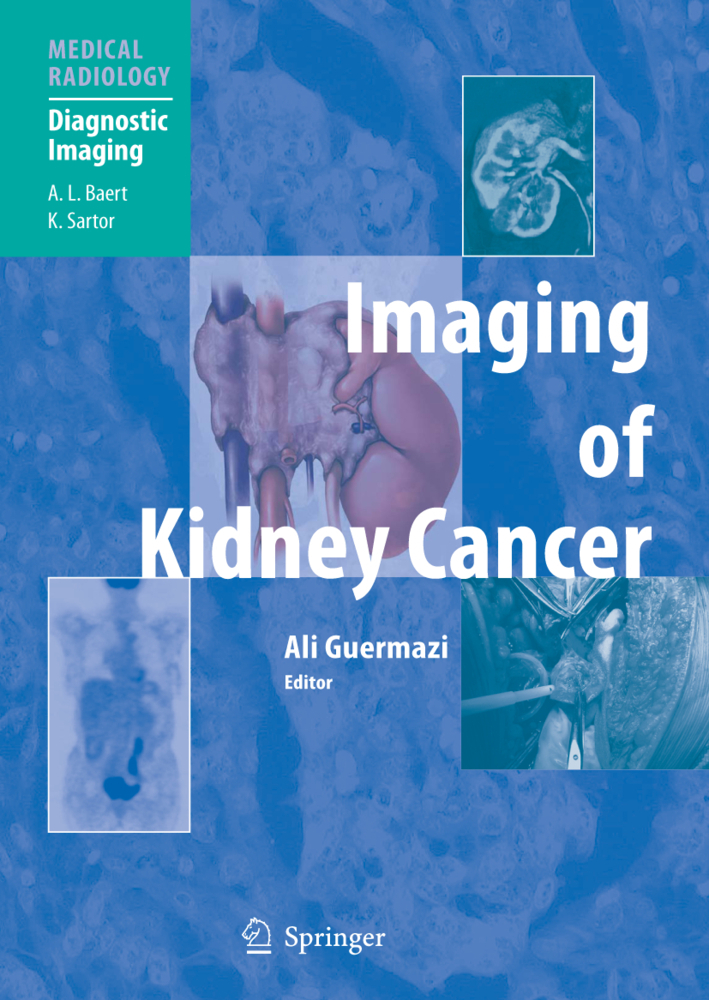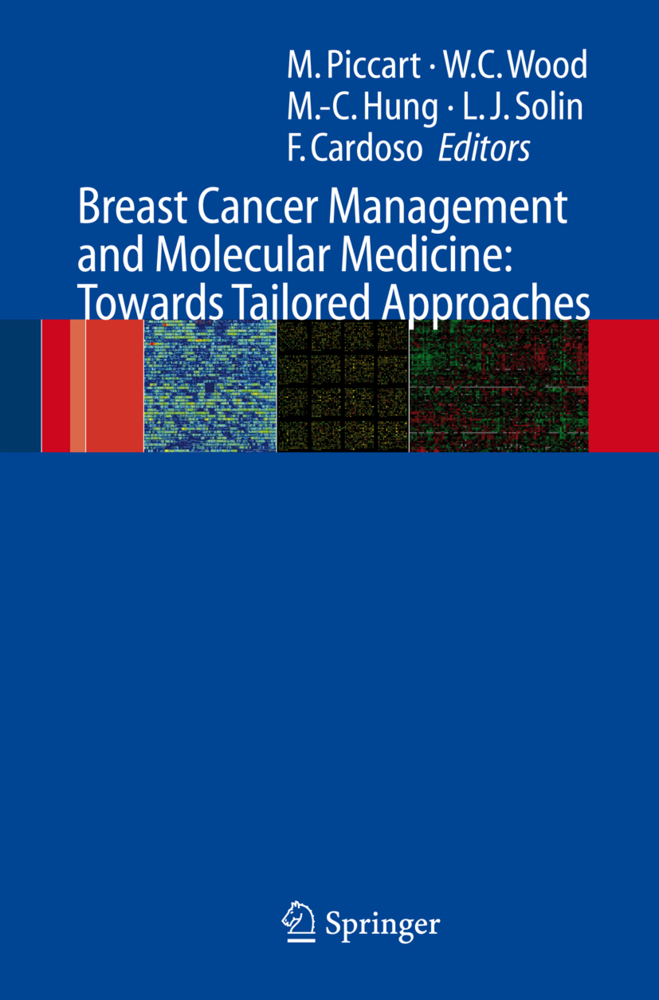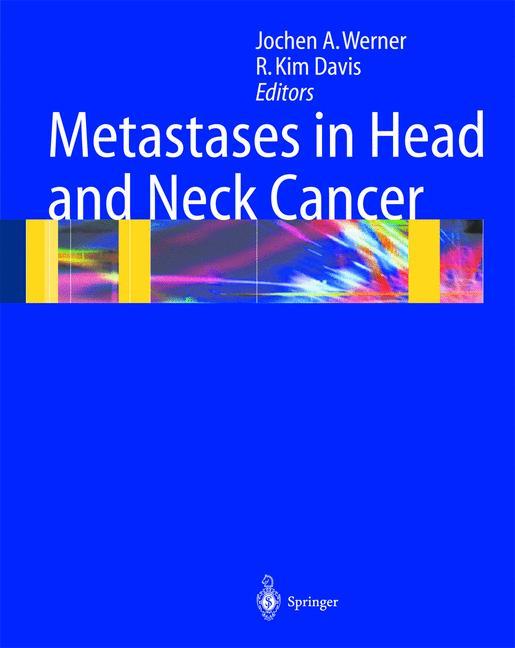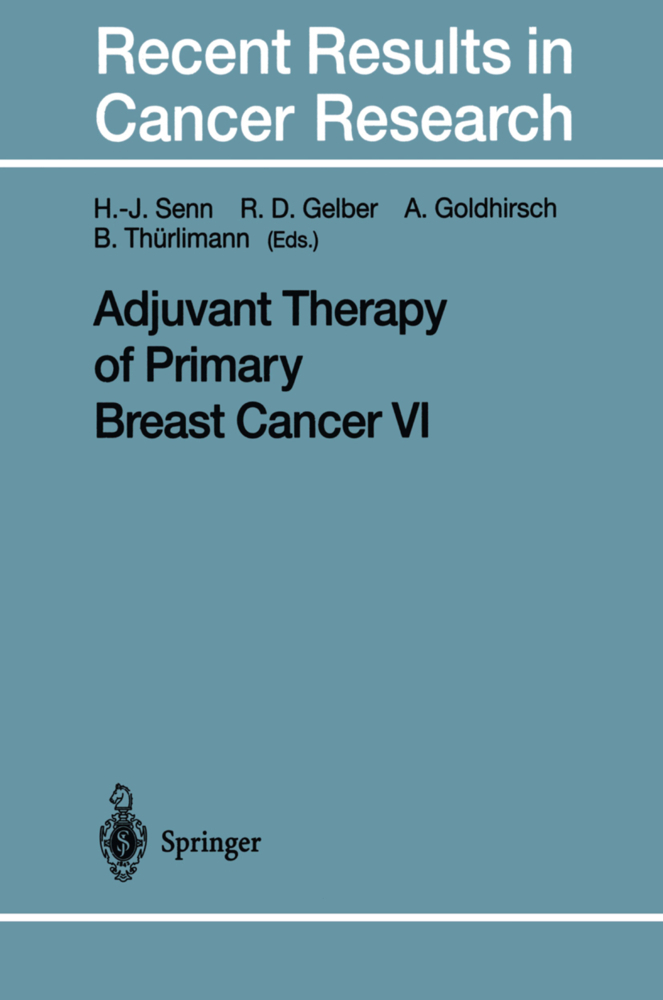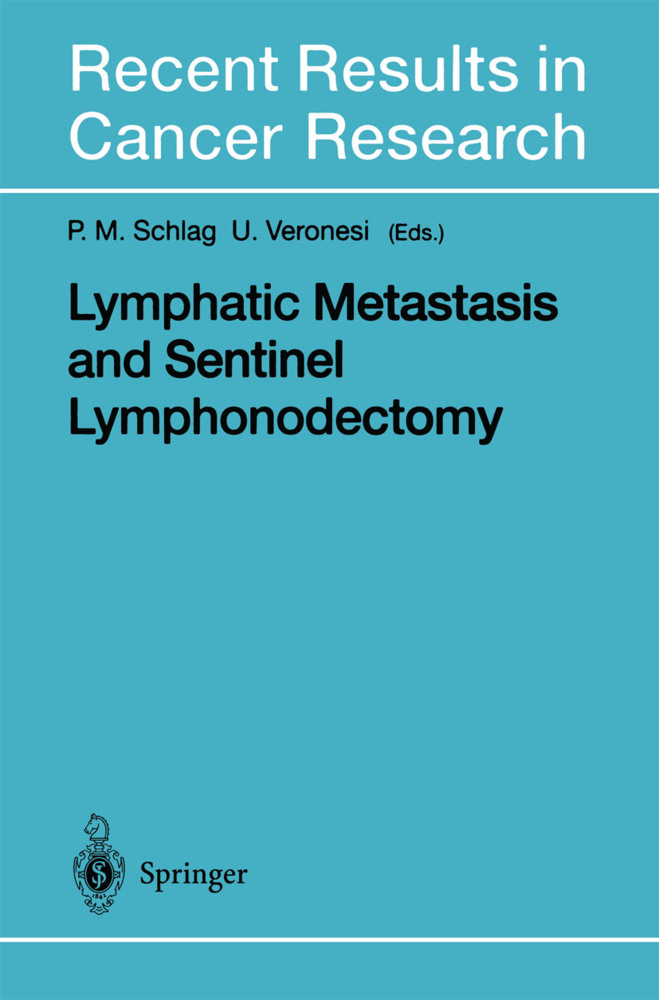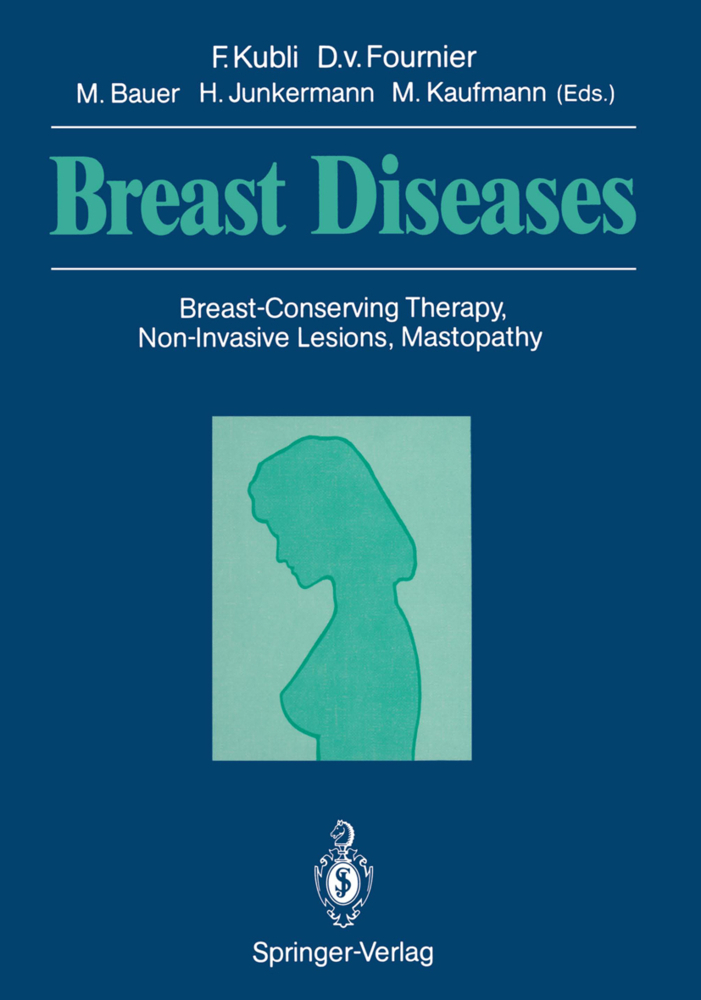Adenocarcinoma of the Esophagogastric Junction
Among malignant tumors, adenocarcinomas of the esophagogastric junction show the highest increase in incidence over the past three decades in Western industrialized countries. This special volume, with contributions from experts in the field, covers all aspects of the disease. Etiology, pathogenesis, classification, and clinical staging are discussed, and there is special emphasis on state of the art treatment techniques. The latter range from endoscopic mucosal resections or limited surgical resections for early cancers to multimodality treatment options for locally advanced tumors. Emerging quality issues in surgical management are addressed. Detailed attention is also paid to other important recent developments, including molecular response prediction, early metabolic response evaluation by PET and PET-CT, the diagnosis of micrometastases, and the use of sentinel node technology. This volume will be of interest to all clinicians concerned with the diagnosis and management of this malignancy.
1;Preface ;6 2;Contents;8 3;Epidemiology of Adenocarcinoma of the Esophagus, Gastric Cardia, and Upper Gastric Third;14 3.1;1.1 Introduction;14 3.2;1.2 Demographics, Trends, and Geographic Variations of Adenocarcinoma of the Esophagus and EGJ;15 3.3;1.3 Age, Gender, and Race;17 3.4;1.4 Gastroesophageal Reflux Disease and ACE and EGJ;17 3.5;1.5 Barrett's Esophagus and ACE and EGJ;18 3.6;1.6 Obesity;20 3.7;1.7 Additional Risk Factors for ACE and EGJ;22 3.8;1.8 Summary;24 3.9;References;25 4;Clinical Classification Systems of Adenocarcinoma of the Esophagogastric Junction;31 4.1;2.1 Esophagogastric Junction;31 4.2;2.2 Classification of Adenocarcinoma of the EGJ Type I- III;33 4.3;2.3 Conclusions;38 4.4;References;38 5;Histopathologic Classification of Adenocarcinoma of the Esophagogastric Junction;41 5.1;3.1 Introduction;41 5.2;3.2 Definition of the Esophagogastric Junction;42 5.3;3.3 WHO Classification of Tumors of the Digestive System;43 5.4;3.4 Histopathologic Subtypes;43 5.5;3.5 Precancerous Lesions and Histogenetic Aspects;43 5.6;3.6 Prognostic Aspects of Histopathologic Classification;45 5.7;3.7 UICC Classification and Grading;46 5.8;3.8 Histopathologic Regression Grading after Neoadjuvant Therapy;46 5.9;References;48 6;The Pathogenesis of Barrett's Metaplasia and the Progression to Esophageal Adenocarcinoma;51 6.1;4.1 Introduction;51 6.2;4.2 Normal Esophageal Epithelium;52 6.3;4.3 Pathogenesis of Barrett's Metaplasia;53 6.4;4.4 Progression to Esophageal Adenocarcinoma;62 6.5;4.5 Summary;66 6.6;References;66 7;Differences in the Molecular Biology of Adenocarcinoma of the Esophagus, Gastric Cardia, and Upper Gastric Third;76 7.1;5.1 Introduction;76 7.2;5.2 Microsatelite Instability (MSI) and Loss of Heterozygosity ( LOH);77 7.3;5.3 Difference in Phenotype on Histology and Immunohistochemistry;77 7.4;5.4 Differences in the Hallmarks of Cancer;78 7.5;5.5 Self-Sufficiency in Growth Signals;78 7.6;5.6 Insensitivity to Antigrowth Signals;78 7.7;5.7 Evasion of Apoptosis;79 7.8;5.8 Limitless Replicative Potential;79 7.9;5.9 Sustained Angiogenesis;79 7.10;5.10 Tissue Invasion;79 7.11;5.11 Conclusion;80 7.12;References;80 8;Clinical Staging of Adenocarcinoma of the Esophagogastric Junction;84 8.1;6.1 Introduction;84 8.2;6.2 Establishing the Diagnosis;84 8.3;6.3 The Tumor Center Localization Determines the Classification;85 8.4;6.4 Preoperative TNM Staging Defines Further Treatment Strategies;86 8.5;6.5 Imaging Techniques for AEG;86 8.6;6.6 Endoscopic Ultrasound (EUS);86 8.7;6.7 Computed Tomography (CT);88 8.8;6.8 18Fluorodeoxyglucose Positron Emission Tomography (18FDG-PET);89 8.9;6.9 MRI;89 8.10;6.10 Staging Laparoscopy Excludes Peritoneal Disease;89 8.11;6.11 Conclusion;90 8.12;References;91 9;Endoscopic Mucosal Resection for Staging and Therapy of Adenocarcinoma of the Esophagus, Gastric Cardia, and Upper Gastric Third;95 9.1;7.1 Introduction;95 9.2;7.2 Staging and Marking Before ER;96 9.3;7.3 Endoscopic Resection Techniques;96 9.4;7.4 Results of ER;97 9.5;7.5 Results in Early Barrett's Adenocarcinoma or HGD;97 9.6;7.6 Complications of ER in Barrett Esophagus;98 9.7;7.7 ER for HGC or Early Cancer at the Esophagogastric Junction;98 9.8;7.8 ER for Gastric Neoplasia;99 9.9;7.9 Conclusion;99 9.10;References;99 10;Surgical Strategies for Adenocarcinoma of the Esophagogastric Junction;102 10.1;8.1 Introduction;102 10.2;8.2 Surgical Strategies for AEG Siewert Type I;104 10.3;8.3 Surgical Strategies for AEG Siewert Type II and III;110 10.4;8.4 Summary;113 10.5;References;113 11;Current Status of Sentinel Lymph Node Biopsy in Adenocarcinoma of the Distal Esophagus, Gastric Cardia, and Proximal Stomach;116 11.1;9.1 Introduction;116 11.2;9.2 Pattern of Lymph Node Metastases;116 11.3;9.3 Extension of Resection;117 11.4;9.4 The Techniques of Sentinel Node Biopsy;117 11.5;9.5 Upstaging;119 11.6;9.6 Using the SLN as Frozen Section During Surgery;119 11.7;9.7 Current Status of Sentinel Lymph Node Biopsy in Gastric Cancer;119 11.8;9.8 Sentinel Lym
Schneider, Paul M.
| ISBN | 9783540705796 |
|---|---|
| Artikelnummer | 9783540705796 |
| Medientyp | E-Book - PDF |
| Auflage | 2. Aufl. |
| Copyrightjahr | 2010 |
| Verlag | Springer-Verlag |
| Umfang | 194 Seiten |
| Sprache | Englisch |
| Kopierschutz | Digitales Wasserzeichen |

